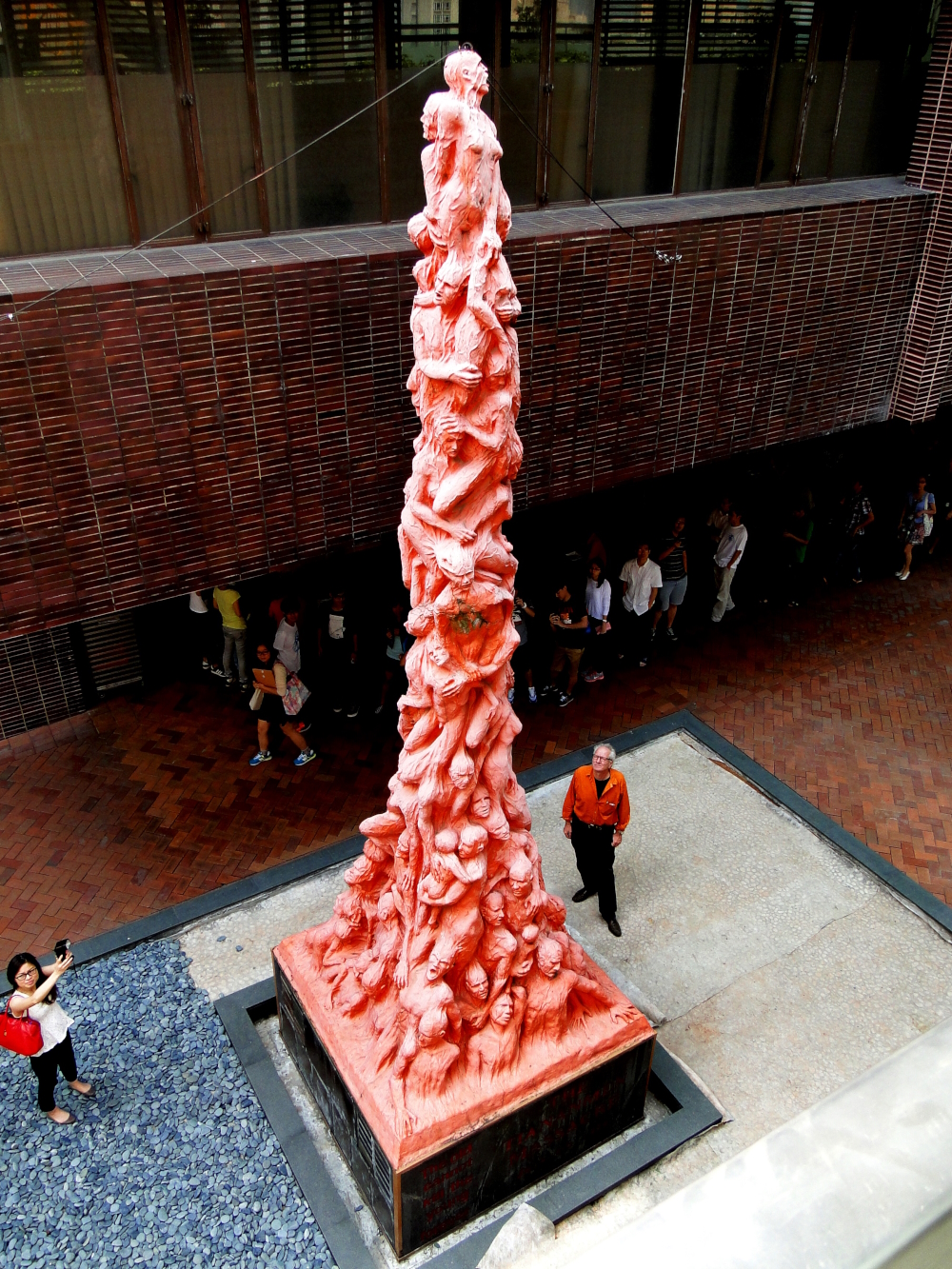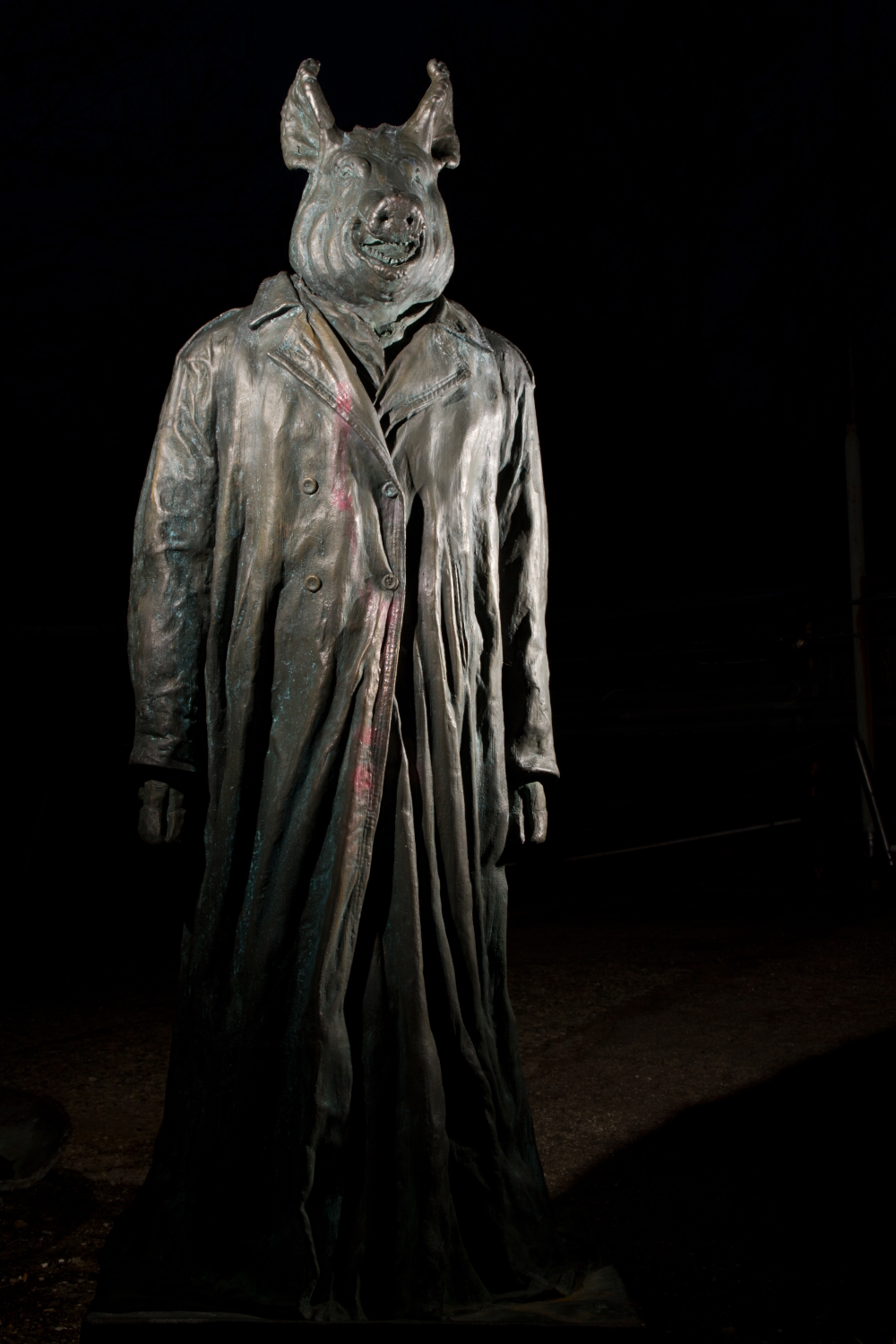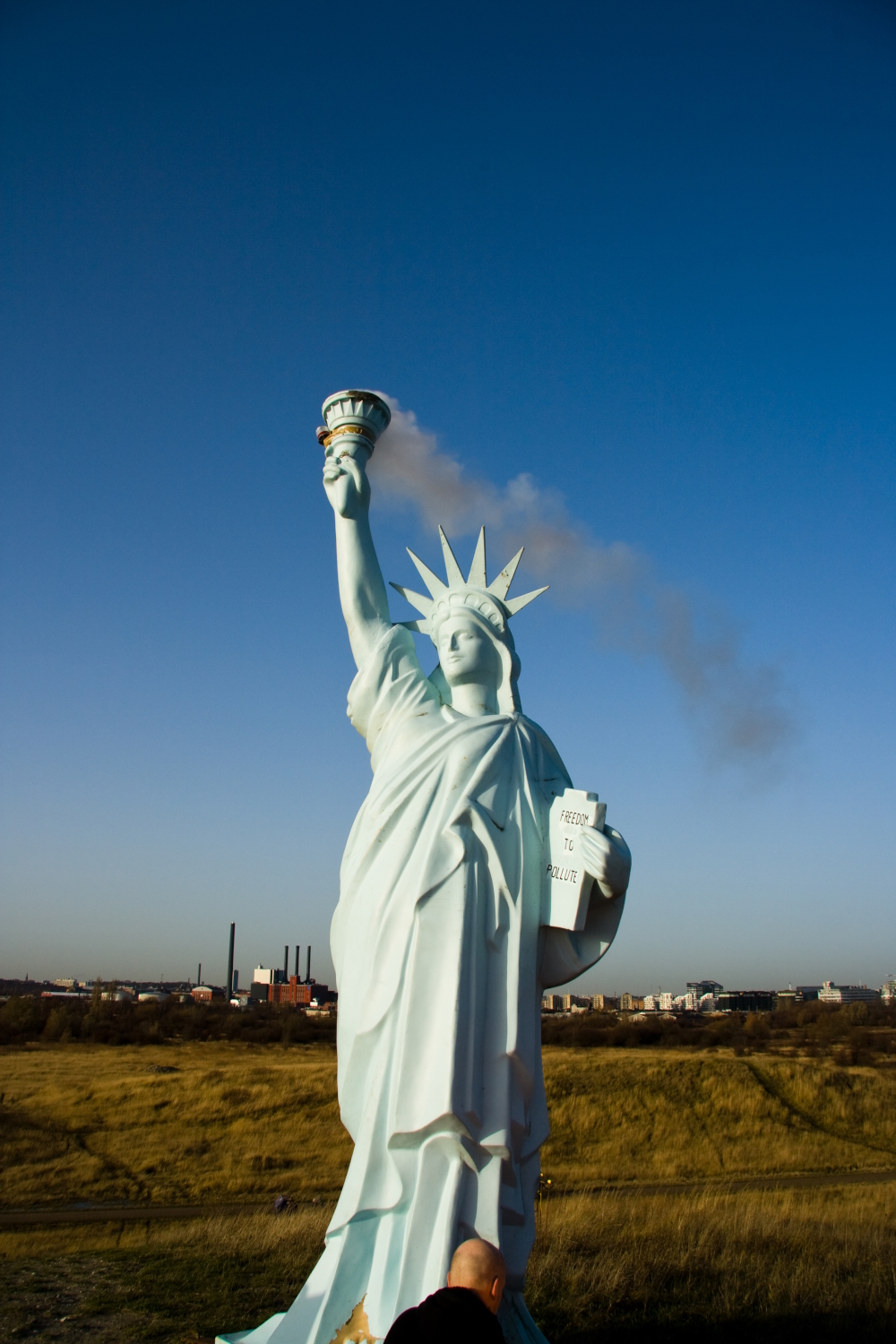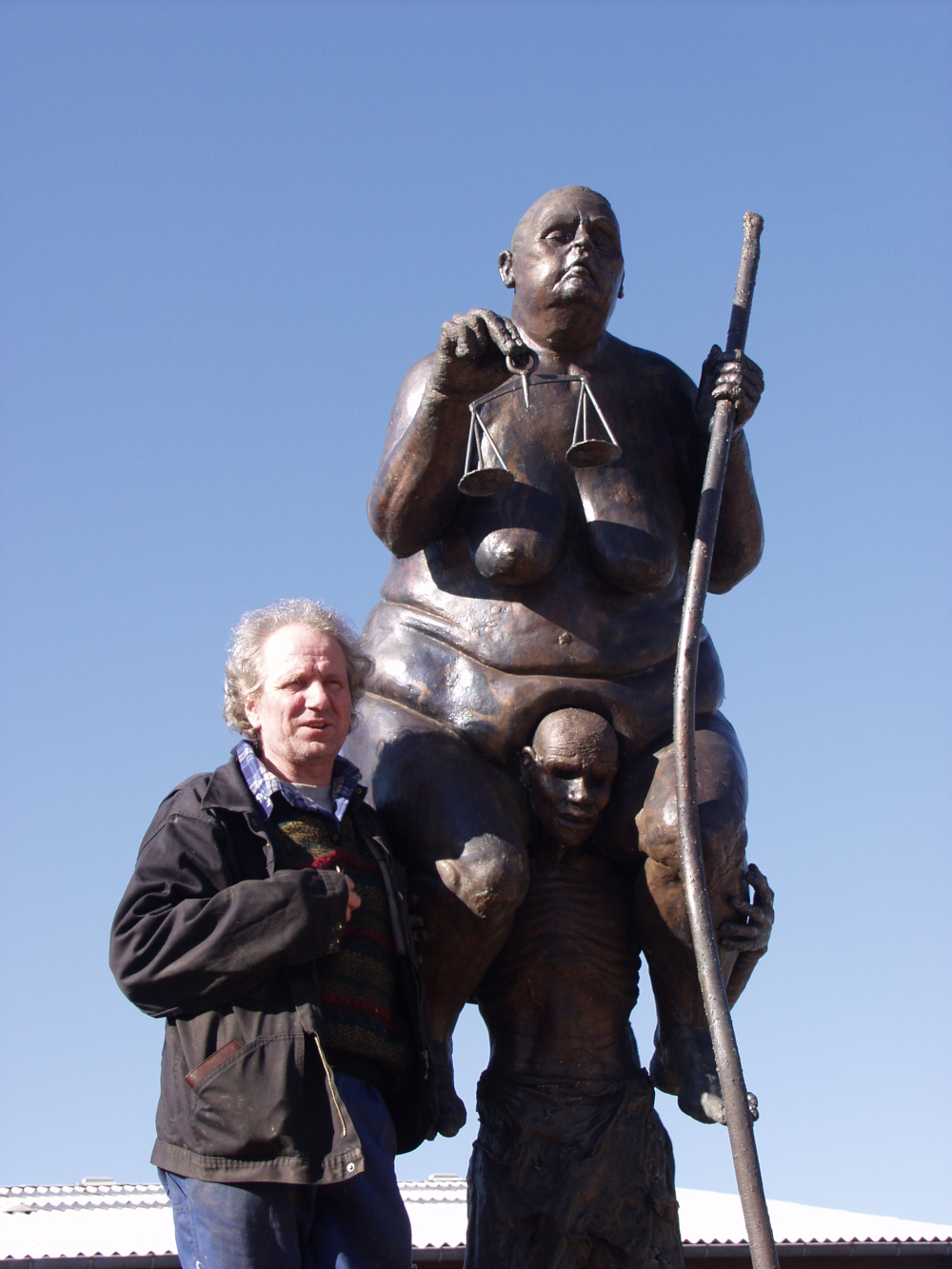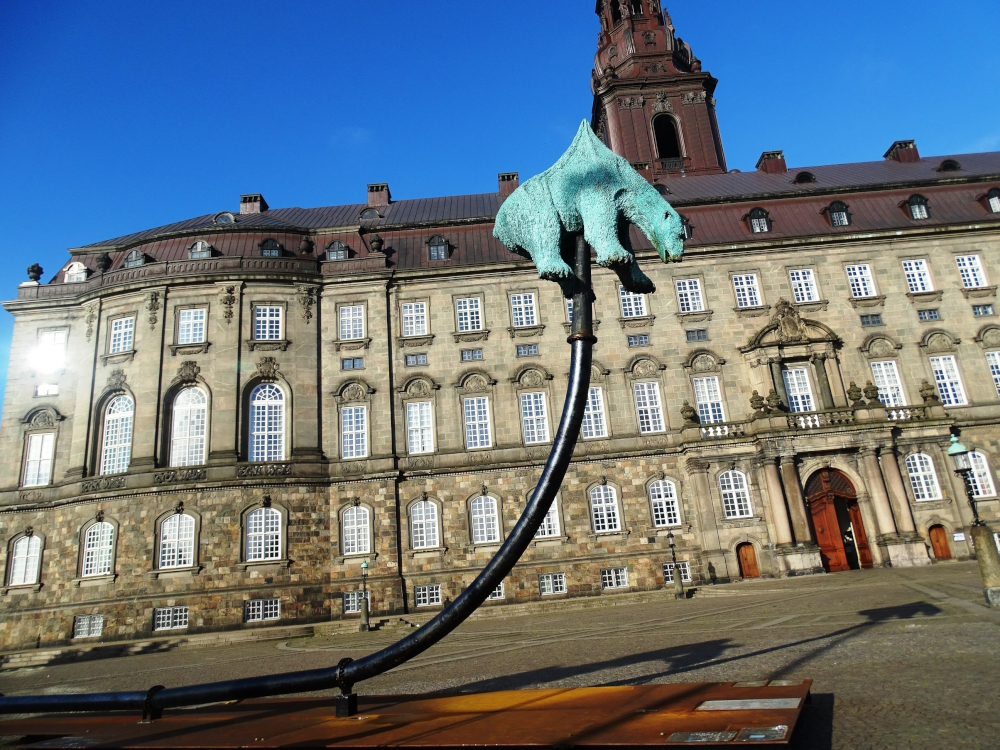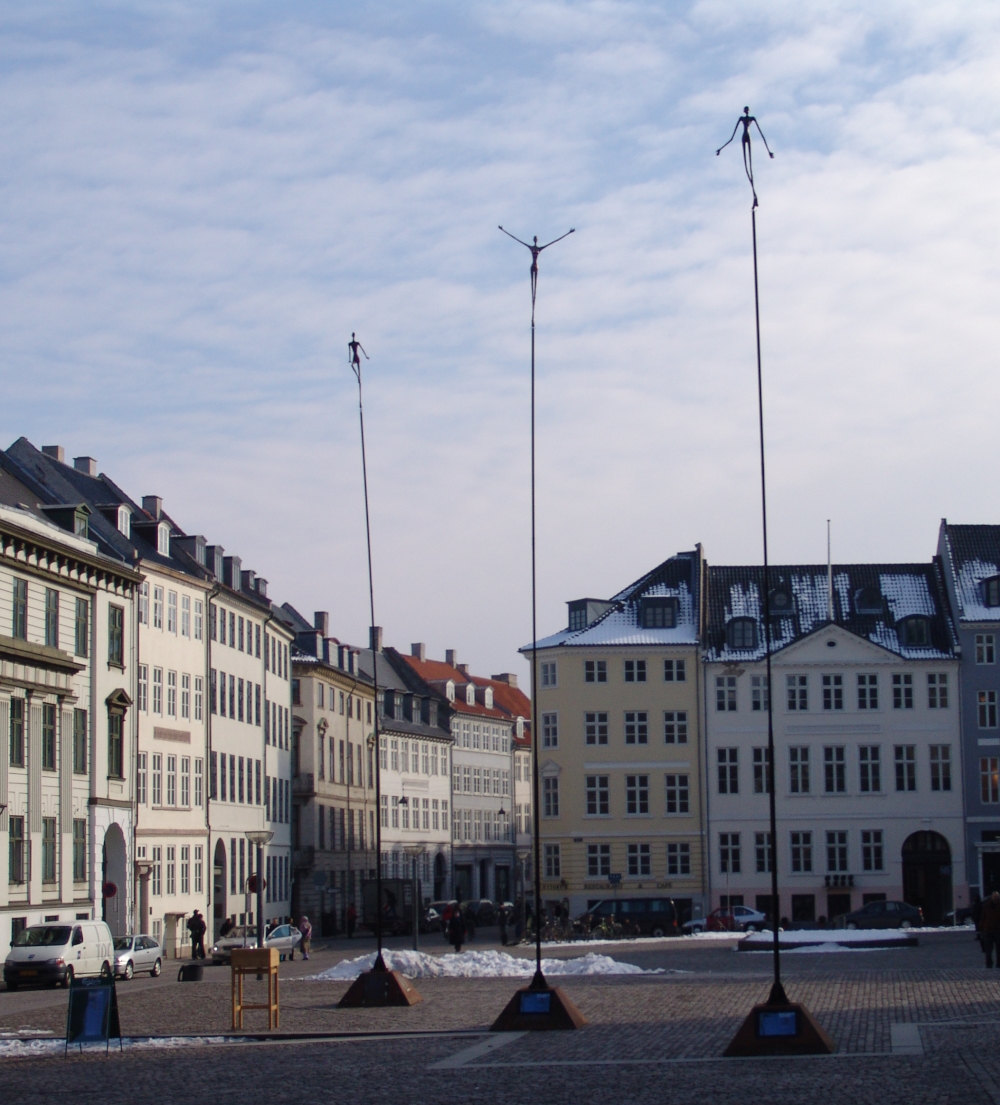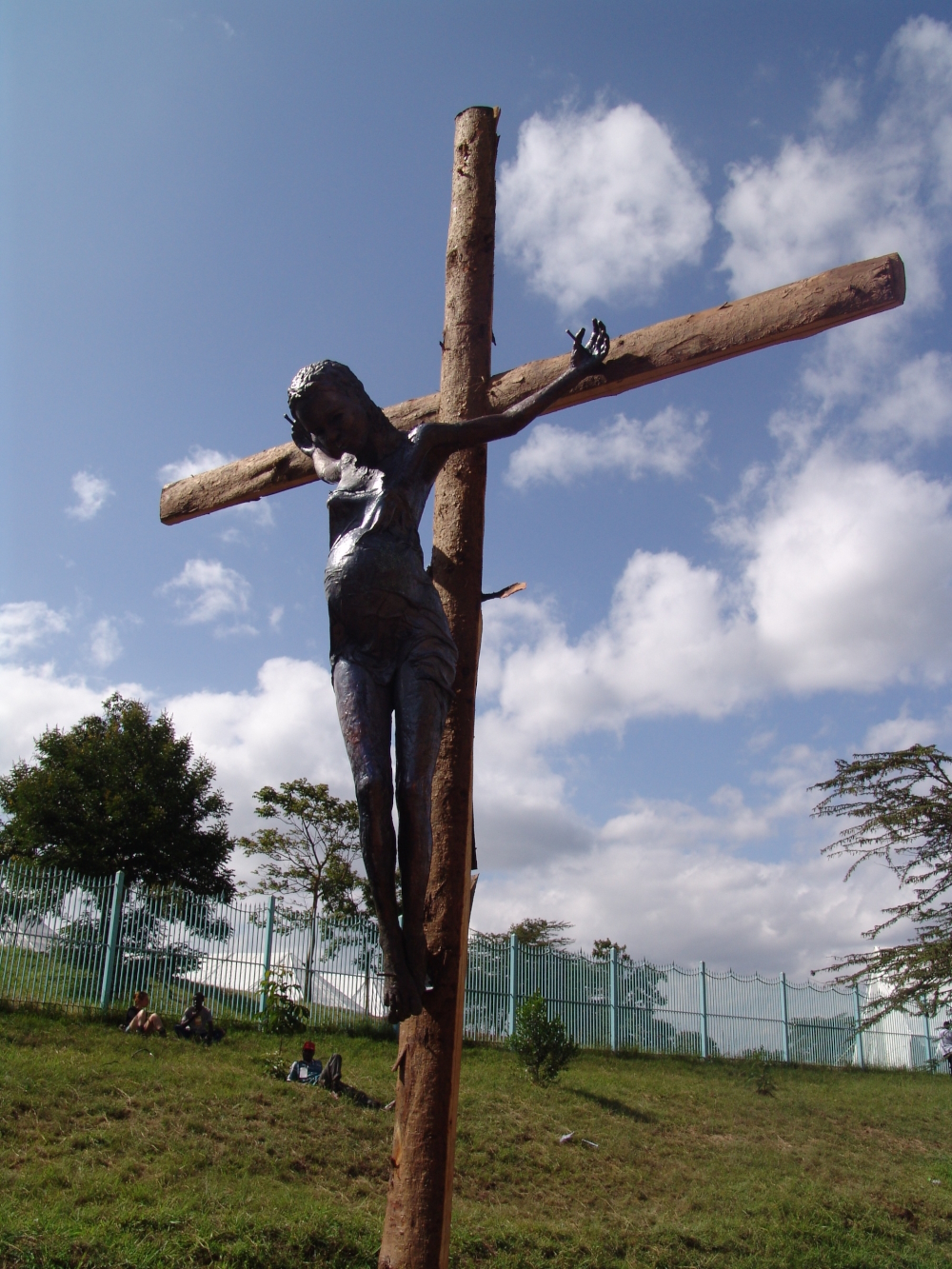Jens Galschiøt
awarded active political sculptor
Denmark
His eight metres tall sculpture „Pillar Of Shame“ that depicts twisted human bodies, made headlines worldwide when it was erected in Hong Kong (1997), Mexico City (1999) and Brasilia/Brazil (2000). Then it was shown „in cities around the world to protest against infringements against humanity“ (Wikipedia). Besides that this creative has produced a row of startling artworks over the course of decades - like the 22 ton black concrete sculpture „My Inner Beast“. It focuses on the increasing violence, intolerance, racism and persecution of minorities in Europe. Or the six feet tall, blue, smoking „Statue Of Liberty“ symbolizing the selfish „Freedom To Pollute“ attitude of the rich countries. Not forgetting the copper sculpture „Survival Of The Fattest“ showing that it’s those in power who define justice. This active political, socio-critical artist is a driven persuasionist. Such an assertion is verified by the fact that his self-financed projects have even lead him to the edge of bankrupt sometimes. But he was always able to drag himself out of the swamp by his own hair either because of commissioned work or the prize money of his awards. For this tumbler, who’s considered as being one of the most significant Danish artists after 1980 who exhibits internationally, things didn’t look bright at first however.
Jens Galschiøt
awarded active political sculptor
Denmark
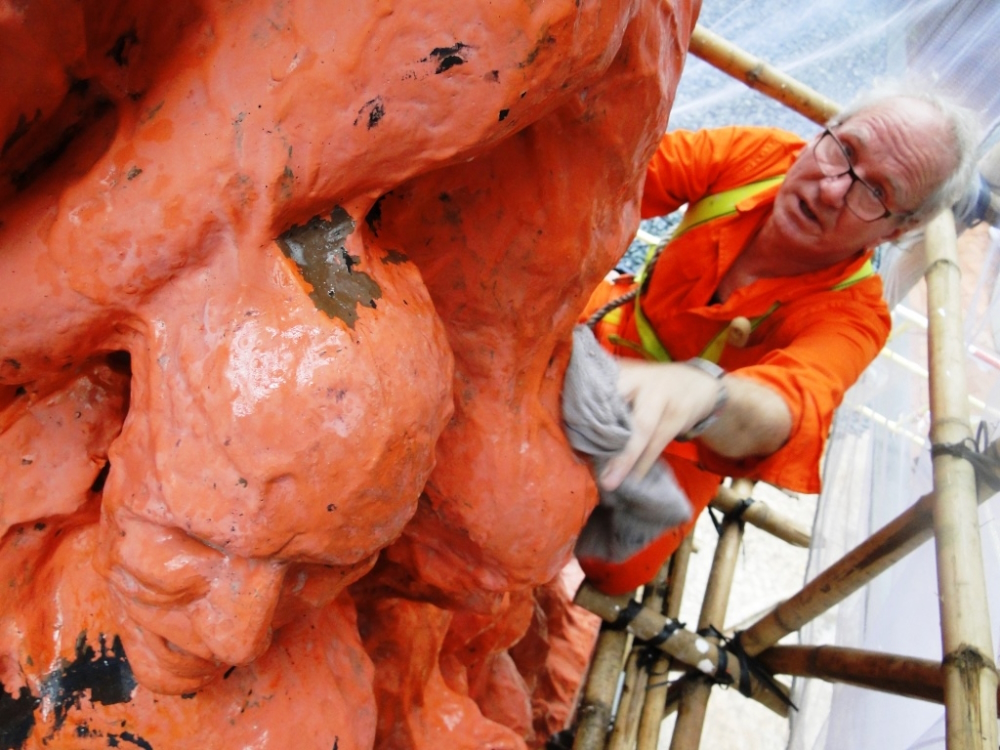
A troubled youth including living a self-destructive life for some time doesn’t rule out getting on track and becoming successful later on. Jens Galschiøt’s development is proof of that statement. The second child to a decorator and a night-time-phone-woman was born on June, 4th of June 1954 in the city Frederikssund on a peninsula. Five years later the parents are divorced. He and his sister stay with the mother.
Little Jens is described by art critic Erik Meistrup in his book „I accuse“ as „a very restless and creative kid. This fact combined with dyslexia („an inability or pronounced difficulty to learn to read or spell, despite otherwise normal intellectual functions“, Encyclopedia Britannica) results in endless battles with teachers.“ In 1967 the mother dies of breast cancer. Jens remains with his step father. In eighth grade the teenager leaves school, works as a factory boy, becomes part of the Sixties‘ Hippie movement and experiments with narcotics. In 1970 he goes back to primary school to get ninth grade. Being 16 years old the youngster moves out of home, establishes his own workshop producing leather bags, hair bands and belts, sold partly by street trading and at his father’s store. During 1972 Jens quits drugs, becomes one of the angry intellectual youth rebels. He works as a laborer at factories and goes to study groups in the left-wing theory. By 1978 the mid-twen is a certified construction blacksmith.
1988 is the year when the man, who‘s a self-taught sculptor and silversmith, showcases his first sculpture in copper at a gallery. Since then he has produced many outstanding artworks. He „is a complex artist whose work incorporates elements of installation art, conceptual art, happening, performance art, and Street Art with clear references to „social sculptures“ (Joseph Beuys), Symbolism and Art Nouveau“, says Wikipedia.
„Galschiøt's mode of expression mainly consists of naturalistic and organic forms, which are influenced by the Spanish architect Antoni Gaudí, and the semi-occult stile of the Art Deco period“, specifies askart.com. „In many of his sculptures 'the void' is as an essential part of the expression: for instance when he exhibits clothing sculptures (with the shape of the body, but void of the body), the viewers are encouraged to use their own imagination to fill in the emptiness, by using images from their own lives. If he succeeds in doing so the artist has achieved his goal: to make his sculptures and the human imagination work together. [...] His artistic production covers a wide field of expression; from jewellery and small dainty figures to gigantic, politically emphatic sculptures.“
If you want to obtain a personal impression of his oeuvre The Gallery Galschiøt in Odense on the island Fuenen is the place to visit. The 2.000-square-metres (22,000 sq ft) house a bronze foundry, studio, gallery (including an art school with courses in casting sculptures as well as jewellery) and a sculpture park.
Jens Galschiøt is the founder of AIDOH („Art in defense of Humanism“). He‘s married, father of three children and lives in Odense, Denmark.
Interview November 2023
Thought-provoking artworks: accusing global injustices and disgraces
INTUITION/IMAGINATION
?: How does intuition present itself to you – in form of a suspicious impression, a spontaneous visualisation or whatever - maybe in dreams? And how do you come up with good or extraordinary ideas?
Often the inspiration comes from a discussion or debate I am part of. I have it in the back of my head and then the idea quietly comes to me. Often I awake after a good nights' sleep with the idea in my head.
?: Will any ideas be written down immediately and archived?
Yes.
?: Do you feel that new creative ideas come as a whole or do you get like a little seed of inspiration that evolves into something else and has to be realized by endless trials and errors in form of constant developments until the final result?
It depends on the idea. Sometimes it comes to me and only few adjustments are made before it is realized. Sometimes the idea develops a lot during the process, but the initial idea is still clearly visible in the final outcome. But it often takes years before the idea and the sculpture is finally developed.
?: What if there is a deadline, but no intuition? Does the first fuel the latter maybe?
Then I will have to wait. I prefer to have time for it to develop in my mind till I am satisfied with the idea. But it often helps me to have a deadline. It speeds up my idea process.
INSPIRATION
?: What inspires you and how do you stimulate this special form of imaginativeness?
Debates and conversations with others. Often a talk with my coworkers will generate some crazy ideas I then decide to realize in one way or another. My ‘fuel’ is my own frustrations about what's happenings in the world, and my own powerlessness and shamefulness that I am incapable of changing it.
?: Does an idea need to appeal to you primarily or is its commercial potential an essential factor?
In general yes, but I make different kinds of sculptures:
- Social / Happening-sculptures that are responses to the society or a specific debate often surrounding some kind of injustice. These sculptures are meant to be focus the debates and are not meant for sale (though it happens they are sold later on). Here the idea and the expression are essential to spark the right kind of debate.
- Small sculptures for sale in my Gallery. These are often more commercial in relation to size and price. Still, the creative process is important and even though I know that ‘cute‘, beautiful and ‚‘love‘-related sculptures sell easily I insist on making vulgar and ‚ ‘ugly‘ sculptures as well.
- commissioned sculptures. When a customer asks me to make a specific sculpture I come up with the idea and suggestion, but I somehow have to comply with the customer's request if I want the assignment. But I never make a sculpture on demand without being dedicated to it and feel that it is something I can vouch for.
?: Do you revisit old ideas or check what colleagues or competitors are up to at times?
Yes. I have tons of unrealized ideas that often come in handy when I have to make something new.
I don't actively check colleagues or competitors out, but of course I find inspiration in other artists' creation.
CREATIVITY
?: How important are self-doubt and criticism by others during such a process?
Critique of the physical outcome or the sculptural method I use is not important, but problematizing my interpretation and the subject is important to me.
?: In case of a creative block or, worse, a real failure, how do you get out of such a hole?
I often wait and hope an idea comes to me. Often I need to some mental space, without too much stress for it to happen.
?: Should a creative person always stay true to him- or herself, including taking risks and going against the flow, or must the person, for reasons of commercial survival, make concessions to the demands of the market, the wishes of clients and the audience’s expectations?
An artist has to be true to him/her-self. That’s the essence of art. If that is not the case, I would question if it is actually art or instead handicraft/production.
?: When does the time come to end the creative process, to be content and set the final result free? Or is it always a work-in-progress, with an endless possibility of improvement?
There is always more I can do to make my sculptures more perfect. But at some point I have to stop.
SUCCESS
?: “Success is the ability to go from one failure to another with no loss of enthusiasm.“ Do you agree with Winston Churchill’s quote?
Yes! Optimism is definitely an important drive.
?: Should or can you resist the temptation to recycle a ‘formula’ you're successful with?
No, I often use part of my old works as inspiration for new ones.
?: Is it desirable to create an ultimate or timeless work? Doesn’t “top of the ladder” bring up the question, “What’s next?” — that is, isn’t such a personal peak “the end”?
Of course a timeless work is important, but it is not the end. In a way, I think the Pillar of Shame in Hong Kong is my timeless work. But it is not the single goal and new sculptures have new ‘purposes’. Most of my sculptures have a social side to them, and I often get very strong positive feedback when I touch on subjects that are important to the viewer, like climate, homelessness, and poverty. In that way, even less known or popular art pieces are important for some and for me as well.
MY FAVORITE WORK:
The project The Children of Abraham with the sculpture Fundamentalism. My work is often focused on using art to create a constructive dialogue that is difficult to make through e.g. media and between people.
In this piece I presented 600 of the brightest and darkest quotes from the Torah (Jews), Bible (Christians) and the Quran (Muslims) inside my giant sculpture that was made up of models of the same books. I managed to create a constructive, inclusive and enlightening dialogue between the three religions, that spread into schools, houses of prayers and everyday life. Through art, people (religious and non religious alike) were confronted with their own prejudices, and got to see ‘the other side’.
The debate about religion is often quite toxic, so I am very proud to have done that.

